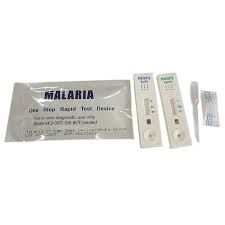Malaria strips, also known as rapid diagnostic tests (RDTs), are simple and effective tools used to detect malaria infections quickly. These tests are typically available as dipsticks or strips that can be used in various settings, including remote areas without access to laboratory facilities.
Key Features
- Ease of Use: Malaria RDTs are designed for straightforward application and interpretation, making them accessible for use by healthcare providers and even drug sellers in the field.
- No Electricity Required: These tests do not need any special equipment or electricity, allowing them to be utilized in low-resource environments.
- Rapid Results: Results can often be obtained within 15-20 minutes, providing timely information for diagnosis and treatment.
Types of Malaria Strips
1. Antigen Detection Strips: These strips detect specific antigens produced by malaria parasites in the blood. They are effective for diagnosing infections caused by Plasmodium falciparum and Plasmodium vivax.
2. PCR-Based Strips: Some advanced RDTs can also incorporate PCR technology to enhance sensitivity and specificity, allowing for the detection of lower levels of parasitemia.
Performance
- Sensitivity and Specificity: Studies have shown that the sensitivity of these tests can range from 76.6% to 86.9%, with specificity generally above 90%. This means that while they are reliable, confirmatory testing may still be necessary in certain cases.
- Compliance and Interpretation: The accuracy of results can depend on the training of the individual interpreting the test. Research indicates high agreement rates between drug sellers' interpretations and laboratory professionals.
Advantages
- Timely Diagnosis: Quick results facilitate prompt treatment, which is crucial for reducing morbidity and mortality associated with malaria.
- Accessibility: They can be distributed widely, including in rural health centers and pharmacies, improving access to malaria diagnostics.
Limitations
- False Negatives/Positives: While generally reliable, RDTs can produce false negatives or positives, especially in cases of low parasitemia or when used outside their intended conditions.
- Need for Follow-Up Testing: Positive results typically require confirmation through microscopy or PCR testing to ensure accurate diagnosis and appropriate treatment.





